The incredibly lush, green scenery of Kyushu continued all the way north and east as we left Cape Sata in the far south. Reaching the east coast an unexpected surprise was passing the Japan Space Agency’s rocket centre at Uchinoura. It’s certainly no Cape Canaveral but since we were here (and visits were permitted) we decided to go in and take a peek. Unfortunately, just as we did, a huge waft of fog enveloped the mountain bringing visibility almost to zero. Rather a non-event ! What was not a non-event was the beauty of the east coast and specifically an area known as the Nichinan Kaigan coast which extends almost to Miyazaki. While perhaps somewhat generously compared to Italy’s Amalfi coast, it does share some of the same steep cliff drop offs, rocky outcrops and pristine sea views as its more famous Italian cousin. The rutted, horizontal rock formations near Aoshima are quite unique.



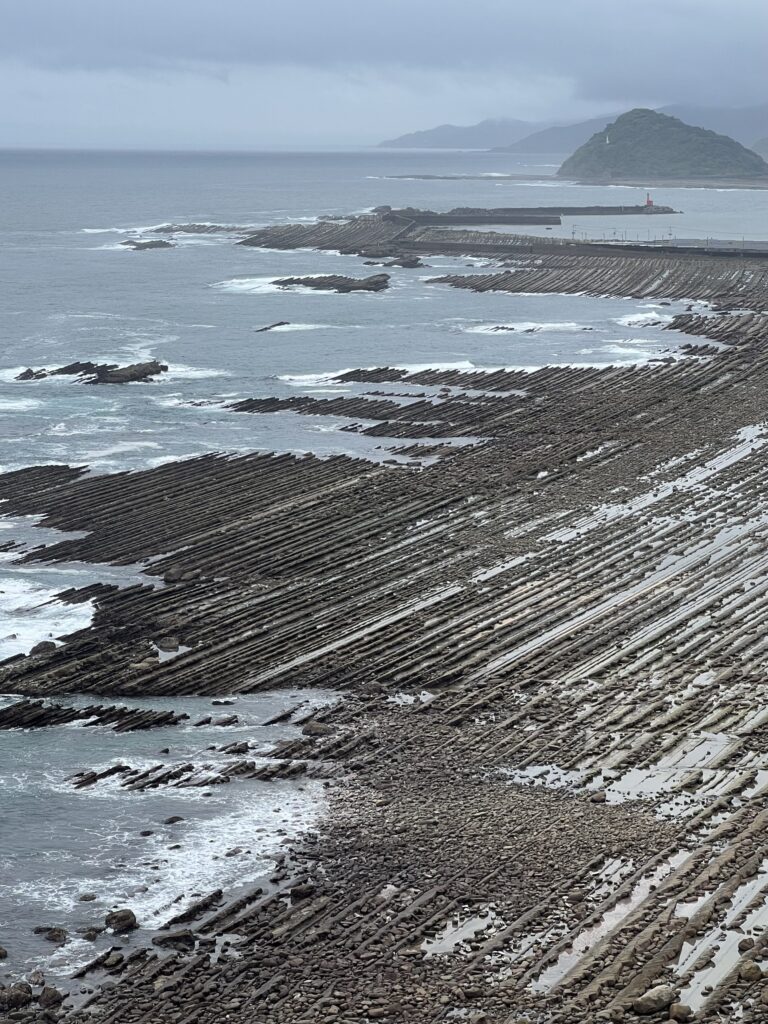
Miyazaki is one of the nicer small Japanese cities and while not holding a lot of interest for the foreign visitor it’s well known in Japan as being pretty much the centre of early Japanese civilization and Miyazaki jingu shrine is the very place where Japan’s first emperor ( Jimmu ), dating back to 600BC, is enshrined. While famous Beppu ( known for its hot springs and thermal pools ) was the main attraction for us before leaving Kyushu, a slight detour west to unique Tackachiho Gorge made for a very worthwhile diversion – not just for the unique gorge itself but for the drive in which included some of Kyushu’s finest scenery ( and narrowest roads ! ). Hardy surprising I suppose, as it criss-crossed parts of Kyushu’s legendary Yamanami Highway.


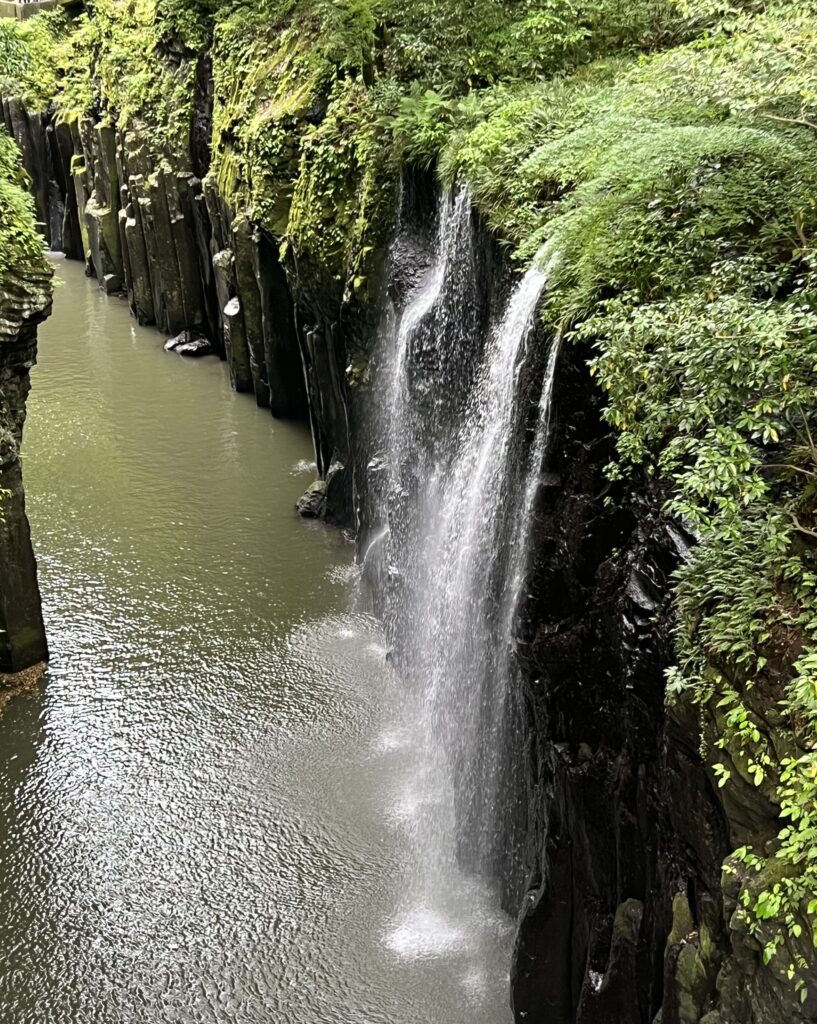
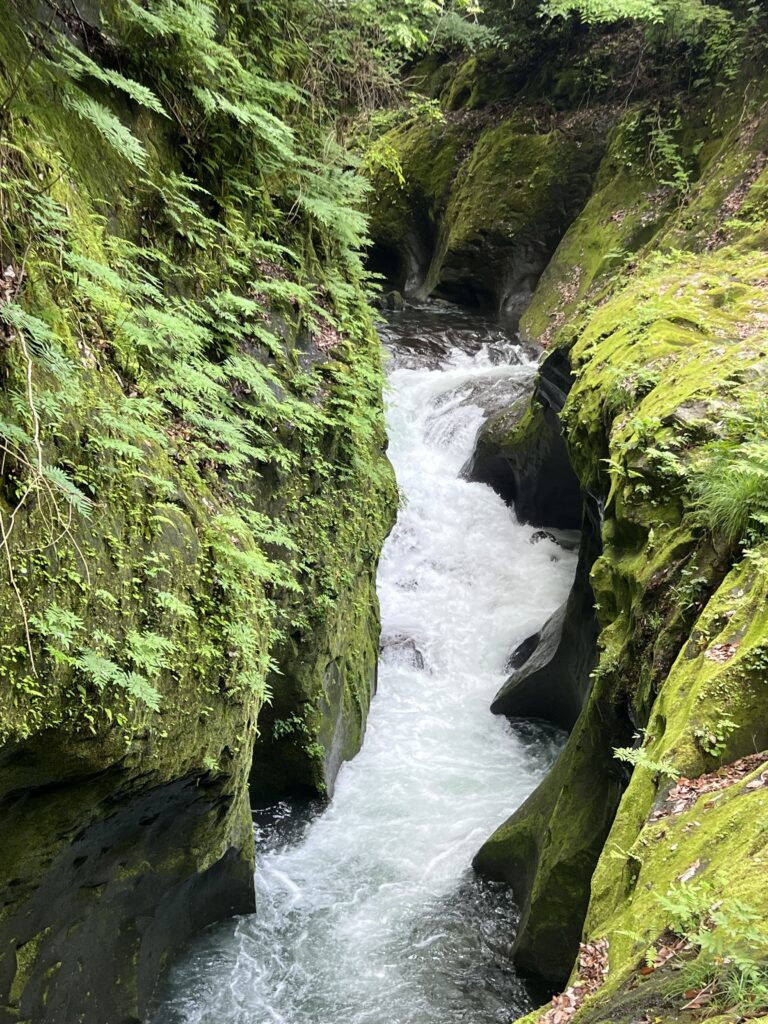
Beppu never disappoints and on this occasion, in addition to visits to a number of its well known red and blue colored thermal springs we managed to find a little, out of the way, quiet outdoor onsen, of the type that can be harder to find. Not only were there pools of differing temperatures and supposed therapeutic qualities but this one included a soothing mud bath. Highly recommended should you get to Beppu !





West of Beppu and across Kyushu’s north lies much heavy industry and generally unappealing urban sprawl ( including Kokura, the city which was supposed to have been the 2nd A Bomb target – how lucky were they ? ) – good for a long “drive day” which got us across the huge Kanmon Bridge connecting Kyushu with Shimonoseki on Japan’s main island of Honshu.

Here there was a decision to be made since our travels would now take us east across western Honshu. On the advice of the “Lonely Planet: Japan” author we opted for the more rural and scenic northern route across what is known as the Sanin Coast versus the more industrial and congested Inland Sea route ( parts of which we would explore later anyway ). An easy choice, really, since we had not explored this part of Japan at all previously. It turned out to be a great call since the route across the north over the next four or five days brought us ( mostly ) good weather, great coastal scenery, two historic towns ( Hagi and Tsuwono ), one of Japan’s best preserved castles in Matsue, a sand dune surprise in Tottori, and finally a look at one of Honshu’s most historic and unique fishing villages at Ine. A week overflowing with sights.
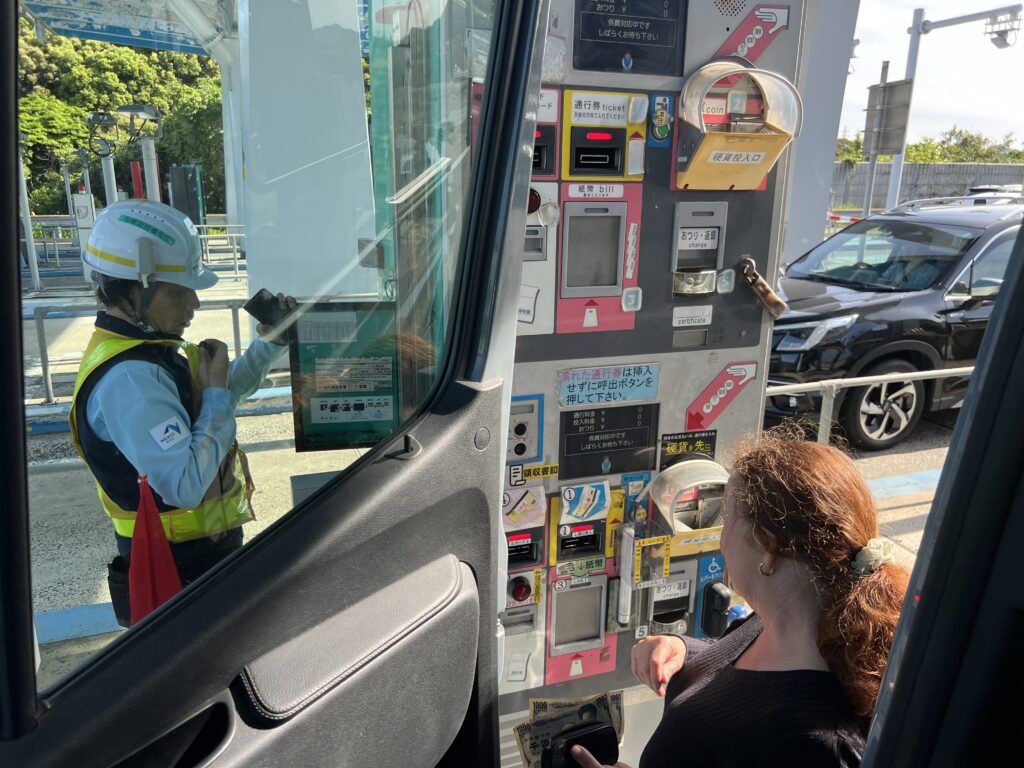
an issue. Got on this one by accident !
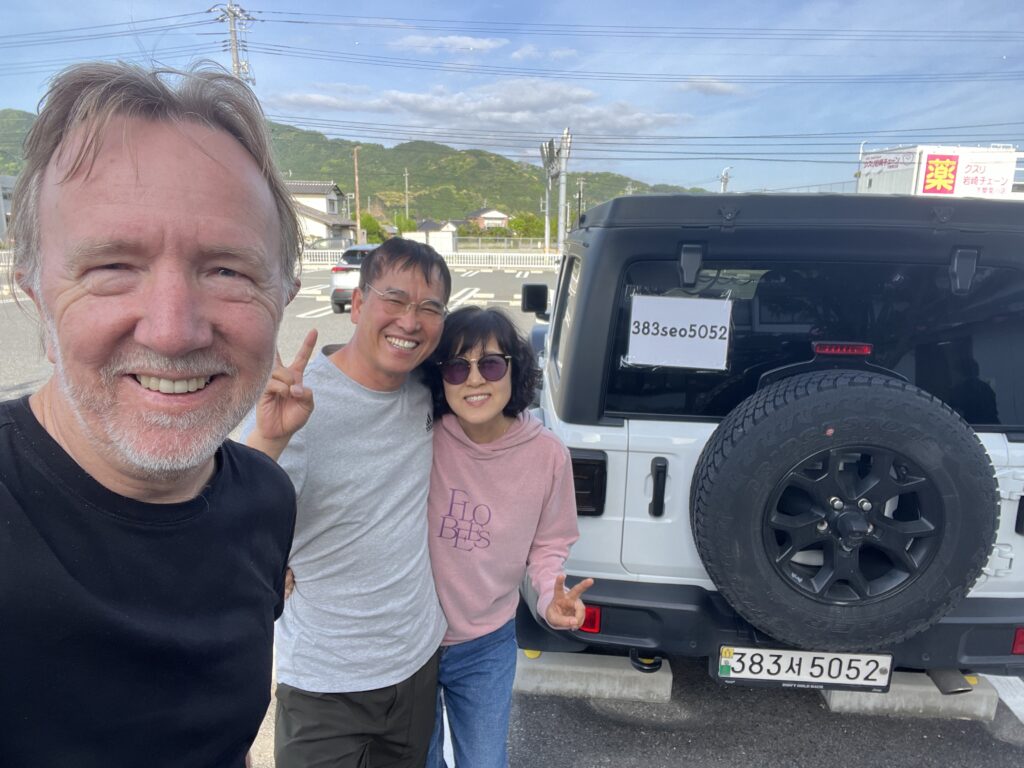













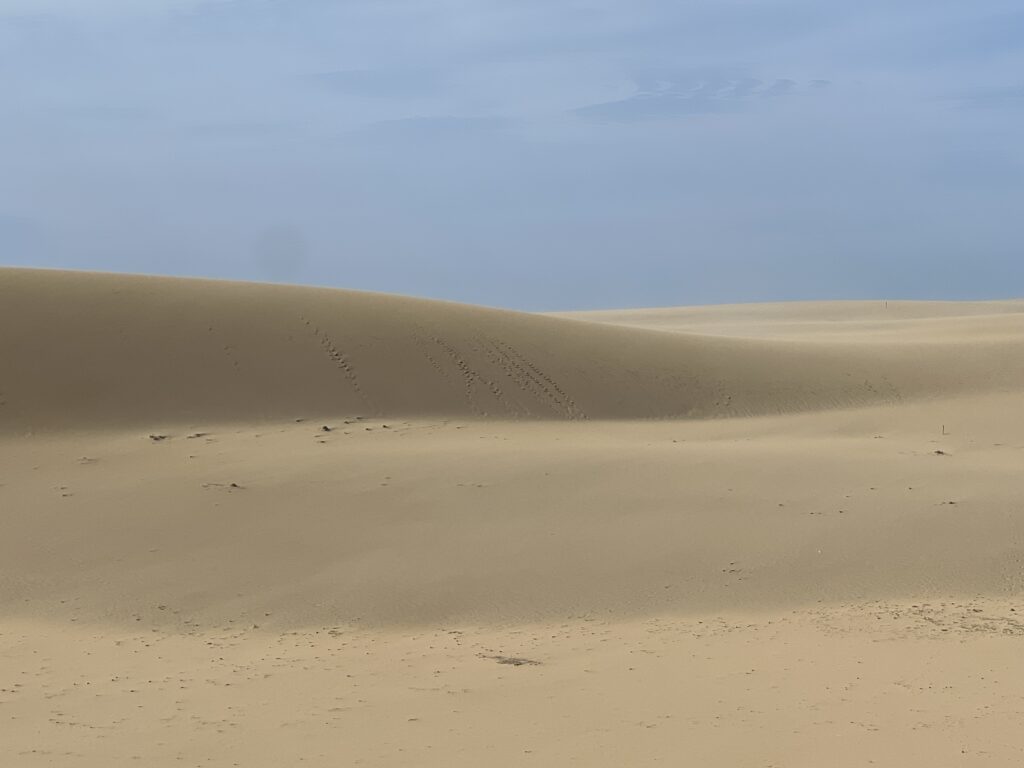


From the Sanin coast we head inland to Japan’s cultural capital, Kyoto and explore Kyoto, Osaka, historic Nara and our old stomping ground of Kobe. Till next week……
Note: This week I decided to roll all the video clips into one 4 minute “reel”. Gives a bit more continuity and the clips pretty much follow the order of the pictures above. Enjoy….


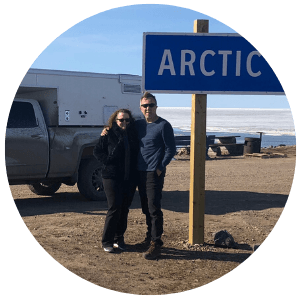
Love the montage Jeff and Lois,
Hi Ernie,
Glad you enjoyed. Easier to click on one than ten I thought !
I love following your adventures around the world. My wife and I are Pleasureway owners and love the life even if it is part time. Just a bit too old to do the overseas driving trips.
Thanks for your posts and pictures.
All the best in your continuing travels.
Dale Shantz
Hi Dale,
Glad you enjoy following along, we are happy to have you with us for the ride! One is never too old,( at least that’s what I say!) and we hope to keep rolling this way for a few more years yet 😊.
Cheers,
Jeff
Love the varved bedrock formations…. Amazing!
As did I. Pretty cool name they gave it, too !
Hello from Kelowna, loved the montage. Beautiful country! Continued safe travels my friends.
Hi Scott ( and Kim and fam ),
Glad you enjoyed it – amateur stuff for now but will try to polish it up a bit in future 😊.
Jeff/Lo
Very picturesque! So green and lush. Really enjoyed your blended video. Safe travels.
Hi Kim,
Glad you enjoyed it. Lois says it should have had Japanese music ( next time !).
Sugoi
Thank you Shige ! Nice to hear from you.
Jeff
Thanks Shige !
Jeff
Hello. Where are you now?
I am Toshio Yamamoto from Shimonoseki -c Yamaguchi-p.
Do you remember me?
Yes!!! I am the owner of countach. Thank you for showing me your car..
& It was nice to meet you.
Please continue to enjoy Japan.
Have a wonderful trip.
Sorry for the strange English.
Hi Toshio,
Nice to hear from you ! We are now in Shikoku, it’s very beautiful here. My wife and I really enjoyed meeting you and your friends last week. You all have beautiful cars and I was very envious…! Your car was definitely the most exotic of all, there are not many people that drive a Lamborghini ( thank you again for letting me sit in it !!!!! ).
Best regards,
Jeff
Gorgeous! Japan has so much to offer! Very clean and neat everywhere. Was it tough getting out of the lamborghini? It suited you! Agree with Lo, Japanese music would be a great addition 🙂
Hi Ollie,
No, I will say this – the Lamborghini felt a lot different than the Sprinter van !!!
Yes, the scenery is amazing here, we were just saying today that there almost has not been a day that, while driving, it hasn’t been pretty to look at. We do complain about all the rain we had early on but it has certainly meant the scenery is always very lush.
Will work on some Japanese music for the next video clip…😊
I met you last week at Funaya in INE. This is the old man who took with you. I was very happy to meet you. I’m so excited for your adventure. We drove 850km from Saitama toTottori and an adventure, which is very small compared to your adventure. (lol )
Hi Shige,
Yes, I remember now ! You were with your wife and you talked to me about the camping car. I think you took a photo ? Nice to meet you and I hope we meet again !
Good morning Jeff-san. Where are you now? I would like to meet you again near Saitama,where I live
Hi Shige,
I just sent you an email directly.
Cheers,
Jeff